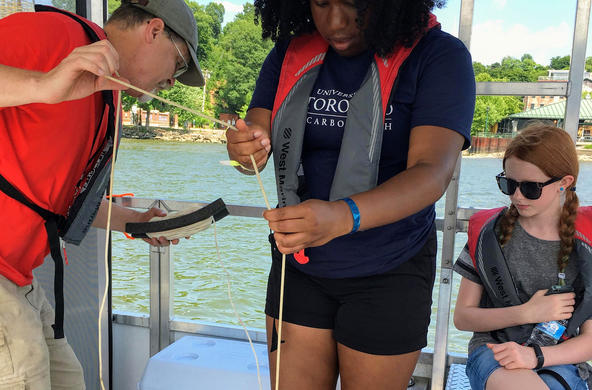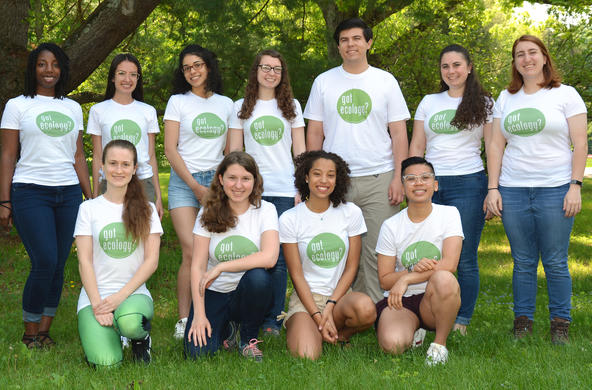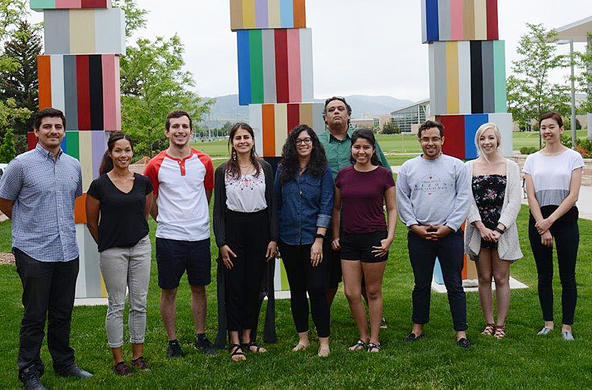Imagine hiking through a forest on the Cary Institute's 2,000-acre property and wondering why the hemlock trees grow just in certain areas or whether the annual influx of tent caterpillars causes long-lasting damage. If you're an ecologist, there are thousands of questions you may ask during an afternoon stroll in the woods, in your neighborhood or in your backyard. But if you're not an ecologist, what do you do?
The answer, of course, is the same: Go outside, observe, ask questions, investigate and then think about what you discovered. Anyone can do this, but using the lens of ecology, 43 teachers from our region spent two weeks asking questions about the world around them during the Cary Institute's professional development workshop, the Summer Institute for Teachers.
For a variety of reasons, it is often difficult for teachers to take their students outside during the school day. Obstacles include a fear of ticks or poison ivy, general safety concerns, administrative resistance or a lack of clarity about what to do when everyone gets outside. One of the main goals when we work with teachers is to help them become more comfortable and confident outdoors, so they can conduct ecological investigations with their students, and to give them relevant and current tools for doing so.
We begin this process by asking everyone to come up with ecological questions while exploring a field or forest edge. When you slow down, look and listen, it is amazing what kinds of questions pop up. "What is that white flower pushing up through the leaf litter?" "Why don't we have any understory bushes?" "Which kind of tree supports the most diverse population of insects?"
Getting to business
Once we talk about the types of questions, it is time to investigate. During the summer workshops at the Cary Institute, teachers designed experiments that could be conducted over a short amount of time, received feedback on their project design from scientists, carried out their investigations and reported their results back to the larger group.
It quickly became clear while we had a lot of questions, answers were much harder to find. As a result, we were able to convey another key component of ecological science: There are often more questions than answers.
Not only did the participating teachers get their hands (and feet) dirty conducting ecological investigations, they also gained insight into cutting-edge research projects from Cary Institute scientists. We learned about the impact of invasive earthworms from Peter Groffman, a microbial ecologist, and explored the importance of Hudson River wetlands on a canoe trip with Stuart Findlay, an aquatic ecologist. Rick Ostfeld and Lisa Schwanz shared their expertise on the relationship between forest health and Lyme disease.
The escalating climate crisis was highlighted by Cary Institute president William Schlesinger, who, as a biogeochemist, has been studying the global carbon cycle for years. Dave Strayer joined the group at Norrie Point Environmental Center to identify aquatic macroinvertebrates and discuss the ways in which the Hudson River and the global water cycle has changed over the last 400 years.
We were also lucky enough to spend some time exploring the wetlands of Tivoli Bays, and while elementary teachers created eco-art in the spirit of Andy Goldsworthy, high school teachers seined for fish in the river and explored the impact of the invasive water chestnut plant.
If you're a teacher and interested in incorporating some of the ideas from our Summer Institute for Teachers into your classroom, explore our Web site (www.caryinstitute.org) or contact us directly. And if you'd like to attend the next session, mark your calendar; we will be offering the opportunity again in 2010.





